As you may have been told in high school, many great works of literature and filmmaking are actually metaphors, using familiar characters and situations to represent deeper, more nuanced abstract ideas. The reasoning behind this is obvious: even small stories, seemingly inconsequential events, are part of an overriding narrative and purpose, reflecting in their nature that everything we experience is a moral lesson intended for our interpretation. To demonstrate this, I’d like to show how one of the modern film classics, Raising Arizona, uses its elements to communicate an important ethical lesson.
The overall plot is simple. A former petty criminal named H.I., and his police officer wife Ed (short for Edwina – let’s not get confused over the moral lesson of this film) find themselves unable to bear children, despite their fervent desire to have a family. They soon discover than an affluent businessman of the area, Nathan Arizona, has recently (with the apparent help of his wife) had quintuplets. H.I. and Ed’s reasoning is, five children is more than any couple can be expected to handle, and it isn’t fair that they themselves cannot have any, and thus they conspire to kidnap one of the quintuplets to raise as their own. All of this is explained before the opening credits, and the remaining movie involves their desperate attempts to retain the child.
They face three obstacles to this goal: Gale and Evelle, two of H.I.’s former inmates (both male – see above); H.I.’s boss Glen and his wife Dot, no longer able to bear children themselves; and a bounty hunter named Leonard Smalls. Notable here is that law enforcement, while appearing within the movie, is never a serious obstacle, and mostly serves as a comic foil to propel the plot.
H.I. and Ed represent America’s Welfare Class. Ed, disappointed over her inability to produce a child, resigns the police force, unwilling to work for her dreams if they are not immediately achievable. H.I., a supposedly reformed criminal, soon turns back to crime because his own employment does not keep him in the wealthy state he feels he deserves. They both take freely from those who have more than they, in this case represented by the baby, Nathan (“Nation”) Junior, depriving the Arizonas of the very family they worked hard to build. But as the plot unfolds, it becomes clear that H.I and Ed are not responsible enough to handle even this small token. We cannot feel sympathy for their plight, since it exists solely through their own efforts.
Gale and Evelle, escaped convicts, represent the failed liberal expectations of our criminal justice system – instead of being reformed by their sentencing, they (notably of the same class as H.I. himself,) subvert it, leave the system, and return to criminal activity. They attempt to recruit H.I for their planned crimes, but note that H.I. is guilty of a much bigger one than they had planned, and soon escalate to the same level of criminal activity. Their plans, however, are to ransom a young “Nation” for the reward, holding our culture hostage to its idyllic “high road” approach, another liberal invention – return our nation and its postwar values to us, and we will reward you, no questions asked. The failures of this approach need no explanation. Note, too, that even as they hold the nation in their hands, Gale and Evelle cannot maintain the simplest of responsibilities, abandoning him/it in pursuit of their former goals – not even content with the impending reward. The message is clear: every inch permitted towards the criminal classes, in the guise of reform, understanding, or proffered respect, only brings us further astray.
H.I.’s boss Glen and his wife represent consumerism. While having a healthy family of their own, they have found themselves deprived of the ability to produce more, and all of their children are beyond the age of “cuddling,” or the immediate gratification of base emotions. Despite knowing the truth about Nathan/the nation, instead of making any efforts to put things right through the obvious, proper channels, they seek to exploit it for their own gain, short-lived as it has always proven to be. Their moral fiber is also demonstrated by the admission that they’re “swingers,” unwilling to settle for the proven stability of monogamous family life and pursing hedonism and sexually-transmitted disease. Glen displays a shallow, bigoted demeanor, while Dot exemplifies the emotional switchback of the dissatisfied suburban, both communicating how badly family values deteriorate in pursuit of short-term gratification.
Nathan Arizona Senior, the father of the child, is the only character in the movie that appears to make no bad decisions, and in fact is not visibly brimming with incompetence and self-absorption. He represents the concept of the blue-collar workers, the primary workforce of the country – competent to a useful degree but, as we are about to see, potentially dangerous when this competence is thought to extend farther than it should.
The bounty-hunter, Leonard Smalls, represents industrialism. Despite his outward ugliness, he is the only one who proves capable of locating the missing child. He approaches Nathan Arizona Senior with his services, but seeks fair-market compensation for his abilities – Arizona, however, does not feel obligated to conform to a free-market system and instead tries to have Smalls arrested, an attempt to use regulation (in the form of the police) to force his own advantage. Notably, Smalls still achieves his goal, locating the child and, through his efforts, seeing to it that Nathan/the nation gets back where it belongs. This occurs even as H.I. destroys Smalls with his own trade tools, showing that industrialization can achieve great things for this country despite the attempts of others to cripple it.
The message is plain: we have tried-and-true systems of prosperity and stability in this nation of ours, and they will see us through the chaos of short-sighted social programs and indulgent attitudes.
* * * * *
All right, all of that above was just so much horseshit, a superficial interpretation of story elements worthy only of a rank amateur. Industrialization and the blue-collar worker as antagonistic elements, indeed! Raising Arizona is obviously not a Tea-Party Conservative’s message against the lurking liberal demon, but an insightful commentary on gender expectations.
Gender names and roles are freely mixed among nearly all of the players. This is especially true of Edwina, the female protagonist, whose name is usually shortened to “Ed.” She is not only the primary breadwinner of the family, she is the decision-maker, even vetoing all of her husband’s decisions. This would gain little attention if it weren’t for the emphasis on the postwar-era family and household; the attitudes are remarkably old-fashioned, but the gender roles have reversed. This classic home sits in a barren desert, visibly distanced from the welcoming town that one would expect – there is no village of like-minded people. Even more telling, once Ed is convinced that she needs to assume the socially-dictated role of motherhood, the whole structure begins to fall apart.
H.I.’s adoption of the caregiver role repeatedly comes under fire, literally, from just about everyone he meets. Pressured to provide for his child, he encounters a pimply-faced adolescent in a convenience store, reading a “Juggs” magazine and brandishing an enormously phallic pistol – I hope I do not have to point out that this is intended to represent Common Society. Common Society and Authority (in the guise of law enforcement) are soon pursuing H.I. and using deadly force, all out of proportion for H.I.’s ‘crimes’ – diapers are even shot from his hands, hammering home the attitude of loathing for the househusband. Later on, as Ed tells H.I. that this just isn’t normal family life, H.I. replies, “Well, it ain’t Ozzie and Harriet,” as he retrieves the same diapers; we’re made aware that the impression of the idyllic 1950s suburban family contrasts sharply with the dedicated caregiver who perseveres in the face of social expectations.
Gale and Evelle represent the concept of the closeted homosexual, ‘imprisoned’ by society’s expectations. Their jailbreak is an act of frustration and defiance, and the heist of the farmers’ bank represents their desires to undermine the ancient, rural attitudes towards sexuality – in fact, everyone they encounter is stereotypically ‘country.’ Much of what they do is colored by dramatic displays of masculinity, including a clumsy and unconvincing reference to Ed’s breasts, but in a revealing scene, their attention to personal grooming proves to be their downfall, as the bounty hunter ‘tracks’ them by their styling gel; no façade is foolproof.
Also notable is their care of the infant, which is tender and thoughtful as long as they do not fulfill their dictated gender roles. Whenever they are called upon to act more masculine, however, the child is literally forgotten, a bleak commentary on how our society views child care as only a feminine pursuit. It is no coincidence that, immediately upon recognizing how damaging it is to accept this social stigma, the dye packet paints them a brilliant baby blue, a color both masculine and feminine, and thereafter they openly admit their mistakes and accept their true nature.
Of special note is Leonard Smalls, and one is forced to imagine the teasing such a name would garner in a typical school brimming with ill-handled gender issues. The first thing we discover about him is the “Momma didn’t love me” tattoo, giving us the cause of his ungroomed, antisocial appearance. Among his first words are the claim that he has no friends, an undisguised cry for help that falls on Nathan Arizona Sr’s unsympathetic ears. Arizona represents the American Father Figure here, unable to tell his sons apart nor even what they were wearing, dedicated more to the welfare of his business than his children. Smalls naturally comes to a gruesome end in a secondary moral lesson, telling us where poor parenting will lead, immediately after we discover a connection between Smalls and H.I. in the form of an identical tattoo (this one of a roadrunner.) Smalls had earlier hinted that he was sold on the black market as an infant, and we learn nothing at all of H.I.’s parents – I’ll leave you to draw your own conclusions.
There are several other curious elements waiting to be grasped. H.I. takes over dealing with Smalls from Ed, despite her law enforcement training and parental dedication, an act that batters him mercilessly. The dogs that are unleashed against H.I., obviously another representative of the displeasure of authority, do not actually harm or even hamper H.I., instead terrorizing the suburban housewife doing her shopping, telling us where unbridled protectionism can lead. And we witness the transformation of Dr. Spock’s child care book, obtained to guide the new parents, returned battered, burned, and discolored by blue dye yet still intact; the core values of parenting lasting through whatever drama unfolds.
Thus we find Raising Arizona to be a prescient tale about gender roles and social upheaval, telling us that the turmoil over issues such as same-sex marriage and parenting (that we are seeing right now in this country) will still resolve effectively in the end.
* * * * *
Okay, hopefully you didn’t take that too seriously, since Raising Arizona does not actually deal with cultural expectations of gender, but rather serves as pointed commentary over literature in the late 20th century.
Note that the young parents (new authors,) determined to follow in the footsteps of others, are unable to produce a baby of their own; the child, of course, represents fresh, original ideas, and so we see them stealing one from those who have, as it’s rationalized, “more than they need.” Nathan Arizona Sr represents popular, established authors, cranking out near-identical plotlines in response to mass-audience approval, and so spurring new authors to try and mimic the success.
Glen and Dot stand in for unscrupulous publishing companies, producing unremarkable ‘children’ without any concerns over quality or originality. They offer the new authors a contract of questionable ethics, and when rejected, attempt to pressure them into selling out or giving up their story idea. Dot’s enthusiasm over the ‘child,’ closely followed by rattling off all of the supposedly necessary facets of new parents/authors, is a mantra many aspiring writers are all too familiar with.
Gale and Evelle represent the independent publishing methods such as vanity publishing and e-books, ‘breaking out’ of the established procedures and promising quick returns with little investment. In pursuit of these returns, the ‘child’ is forgotten, showing how shortsightedness damages the quality of literature by linking it to capital gains; the goal is the money, rather than producing a lasting piece of art.
Smalls, it should come as no surprise, represents the legal system. Claiming to be motivated with recovering the popular author’s intellectual property, Smalls is concerned instead with how much profit he can produce for himself. The story is not considered a product of the author’s efforts, but only a commodity that can be traded and sold by whoever possesses it at the time; the race to publish, and thus be considered the source of a new original story idea, is a common one in publishing circles, as it is in the motion picture industry.
In the end, the system holds up. The stolen intellectual property is returned, and both the independent publishing methods and the unwieldy legal system are thwarted; the new authors, defeated by the specter of easy rewards, are still encouraged to produce their own original works, as it should be. There’s a level of forgiveness that is typically not found in other fields, a tale of honest rehabilitation rather than the base vindictiveness that so often passes for justice in our society. It’s a lesson we could all stand to learn.
* * * * *
All right, I doubt anyone was taken in by any of that, or at least not for very long, but was there a point? Yes, and it’s this: you can find any element you like and create a ‘real’ metaphorical rationale behind it, especially by being selective over which elements contribute and which are ignored wholesale. But this doesn’t mean that it’s accurate in the slightest, or was intended by the originator.
The pursuit of deeper meaning is a common one in literary circles, and it might even be considered how literature is even defined. And it’s true, some writers actually intend such things to be in place; far fewer than are claimed by any number of literati, however. While Raising Arizona may have its own collection of metaphorical intentions – whether Smalls is a figment of H.I.’s guilty imagination, for instance, and if so, what effect this has on the entire storyline – without the admission of the writers, such claims are only speculative.
It’s an interesting game of ego. Discovering the real meaning, finding the little secret that eludes everyone else, is of course an indication of superior intellect – provided that it’s accurate. In each of the cases above, all I did was decide on an underlying meaning based on just one potential match, and the rest were made (albeit with varying degrees of force) to fit this meaning. You might have caught that I praised Nathan Arizona for his lack of self-absorption in the first interpretation, and lambasted him as oblivious in the second; both of these interpretations have supporting details within the movie, so it all depends on which variation you select for (much like how most people use scripture.) Open interpretations might actually provide some greater enjoyment to the viewer, believing that some work has a more profound meaning than its apparent surface appearance, and there’s nothing inherently wrong with that. But if it extends to making the viewer feel like they’ve surpassed most others with their perspicacity, it probably should be determined, in some way, whether this is even remotely warranted or not. Only the original writer can tell us if the metaphor is present or intended – all else is unprovable supposition.
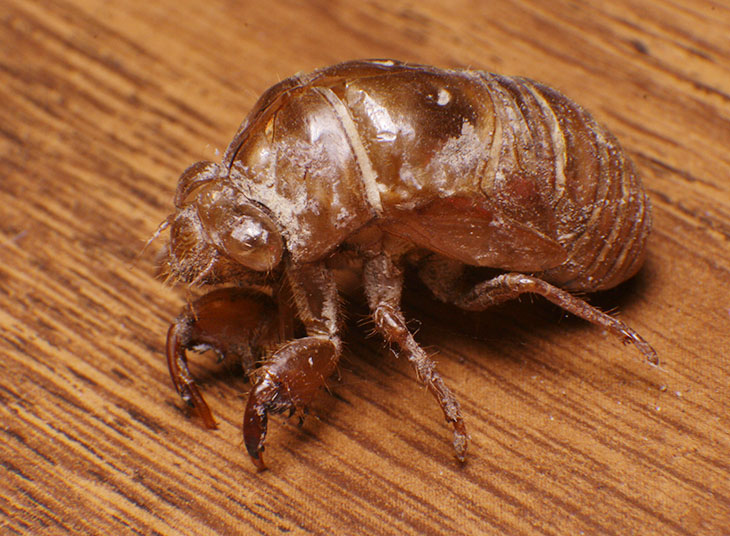
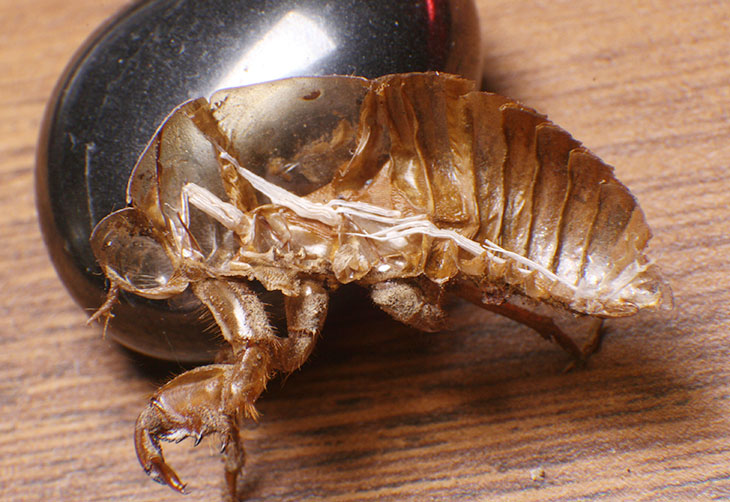

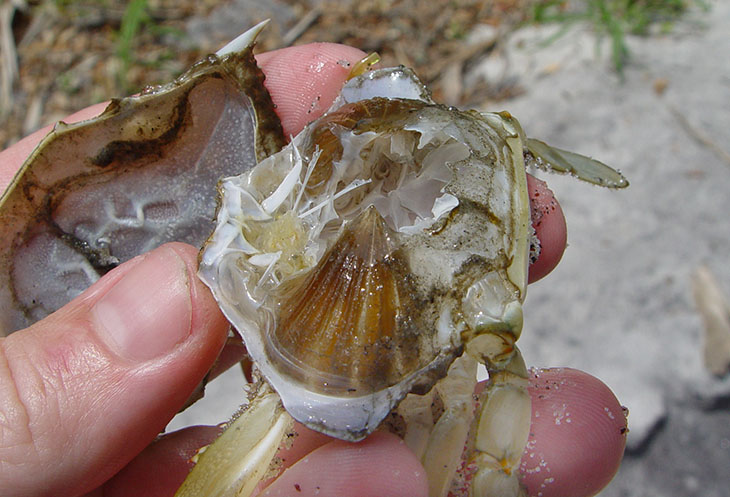





















































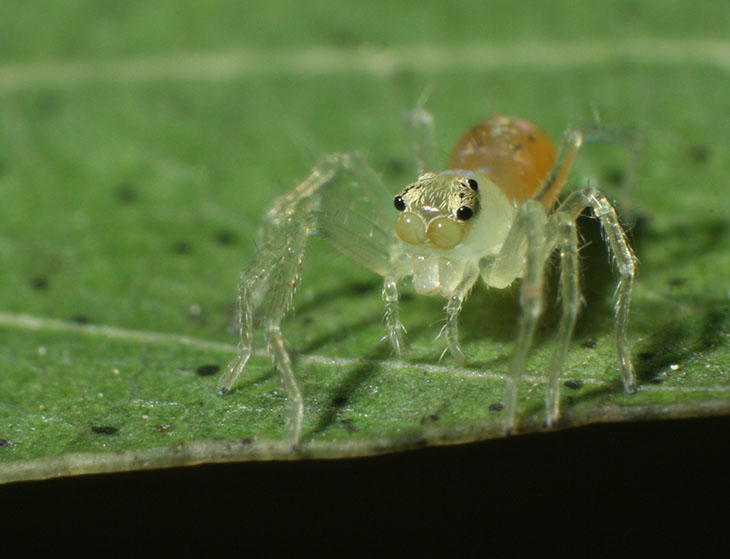
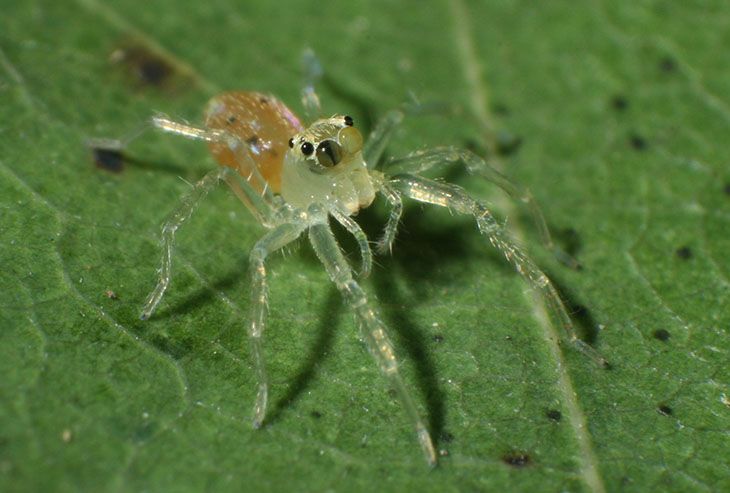
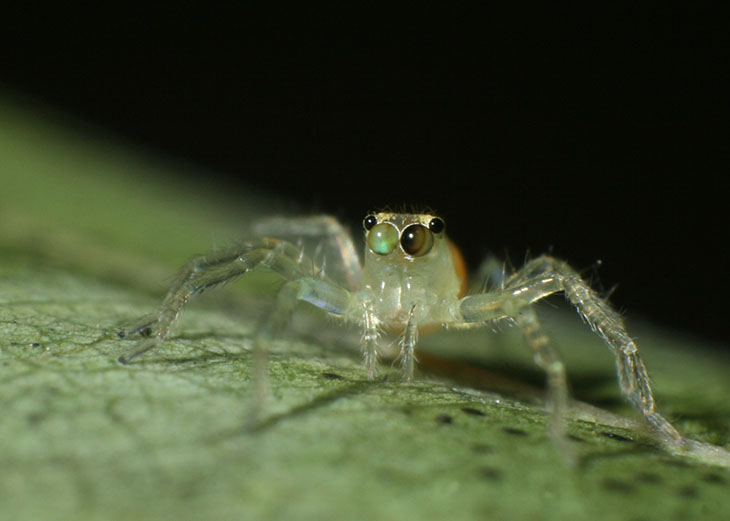
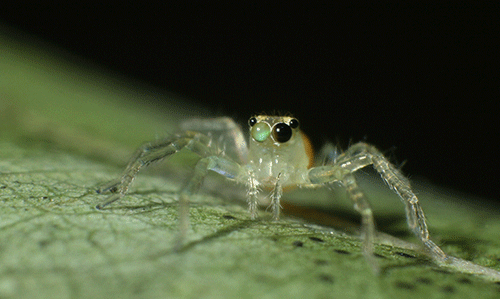 While I wanted a little more eye motion than I managed to capture, I still couldn’t resist making an animated gif from a rapid sequence that I’d fired off – the actual frames I got were spaced slightly farther apart in timing than what appears here, but not significantly. The slight change in perspective is strictly my own movement; I’m lucky to have kept focus while doing so. And yes, I’ve talked about the
While I wanted a little more eye motion than I managed to capture, I still couldn’t resist making an animated gif from a rapid sequence that I’d fired off – the actual frames I got were spaced slightly farther apart in timing than what appears here, but not significantly. The slight change in perspective is strictly my own movement; I’m lucky to have kept focus while doing so. And yes, I’ve talked about the 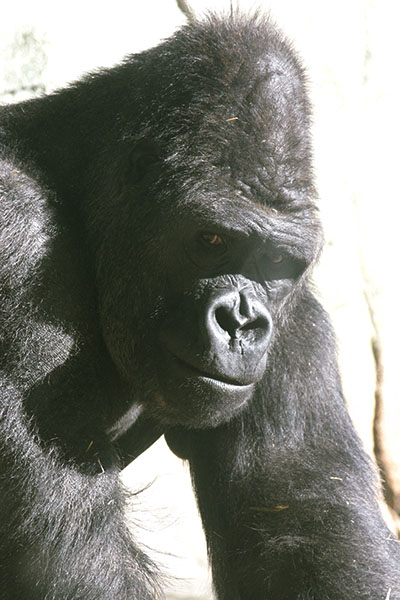

 I, meanwhile, went in the opposite direction yesterday. On what I’m pretty sure is a pokeweed plant (Phytolacca americana, the subject of the dried berry images
I, meanwhile, went in the opposite direction yesterday. On what I’m pretty sure is a pokeweed plant (Phytolacca americana, the subject of the dried berry images 
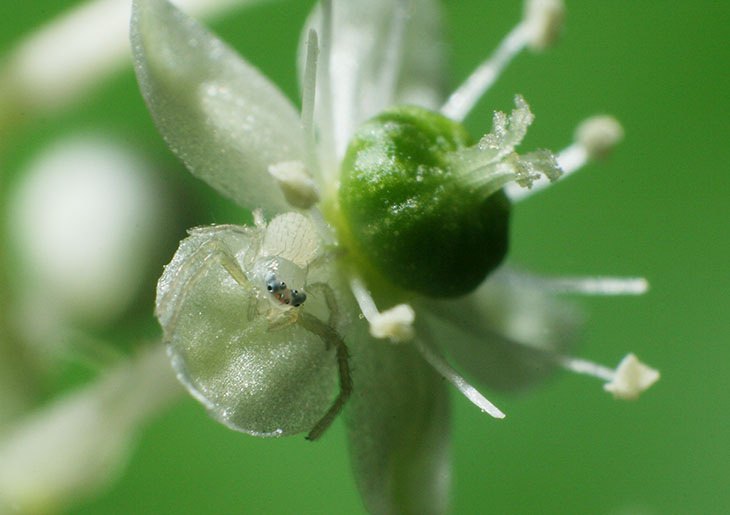
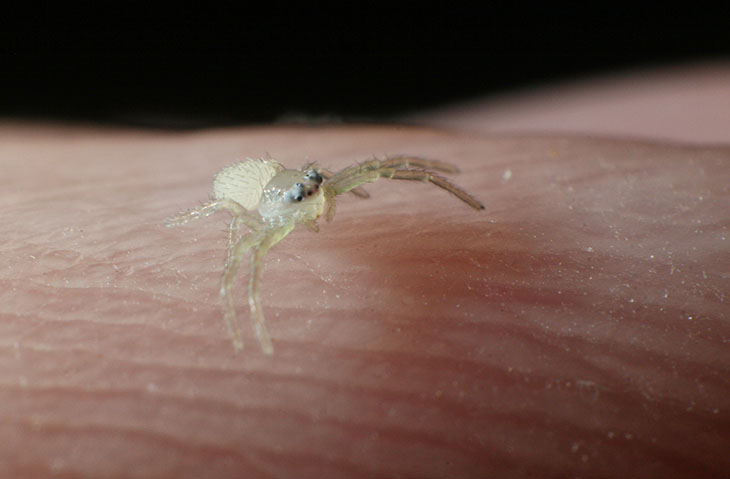
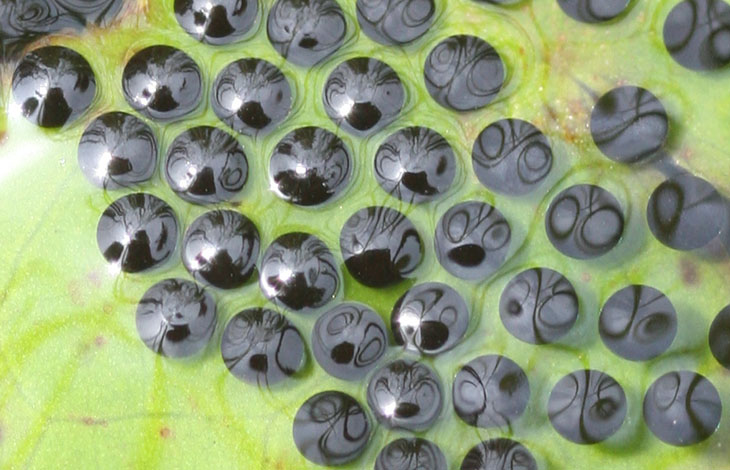
 I mentioned in the previous post that I went someplace that I was going to feature here shortly; this is not the time. Since then, I did a short side trip and got a bunch of shots that I’m bumping ahead of those, because I want to, so there.
I mentioned in the previous post that I went someplace that I was going to feature here shortly; this is not the time. Since then, I did a short side trip and got a bunch of shots that I’m bumping ahead of those, because I want to, so there. None of them were calling, and there was practically no activity until they deemed I was too close, but they were pretty easy to spot, and I saw dozens. Most were quite small, about half adult size or smaller, and a few sported the last vestiges of their tadpole tails, obviously this spring’s brood. While adults can get up to 5 or 6 centimeters, the average size is about 3, and the ones I was seeing typically ran 1 to 2 cm in body length. The longitudinal white stripe is a distinctive identifier, but in the right light, they gain a faint iridescence and a hint of gold in the white. As treefrogs, they have excellent adhesion to just about any surface and prefer to be vertical, usually selecting something as close to their body color as possible to perch upon – this means, when you’re out looking for them, you aim for the plants with the brightest green, preferably big leaves in or around water – pickerelweed (Pontederia) is thus ideal.
None of them were calling, and there was practically no activity until they deemed I was too close, but they were pretty easy to spot, and I saw dozens. Most were quite small, about half adult size or smaller, and a few sported the last vestiges of their tadpole tails, obviously this spring’s brood. While adults can get up to 5 or 6 centimeters, the average size is about 3, and the ones I was seeing typically ran 1 to 2 cm in body length. The longitudinal white stripe is a distinctive identifier, but in the right light, they gain a faint iridescence and a hint of gold in the white. As treefrogs, they have excellent adhesion to just about any surface and prefer to be vertical, usually selecting something as close to their body color as possible to perch upon – this means, when you’re out looking for them, you aim for the plants with the brightest green, preferably big leaves in or around water – pickerelweed (Pontederia) is thus ideal.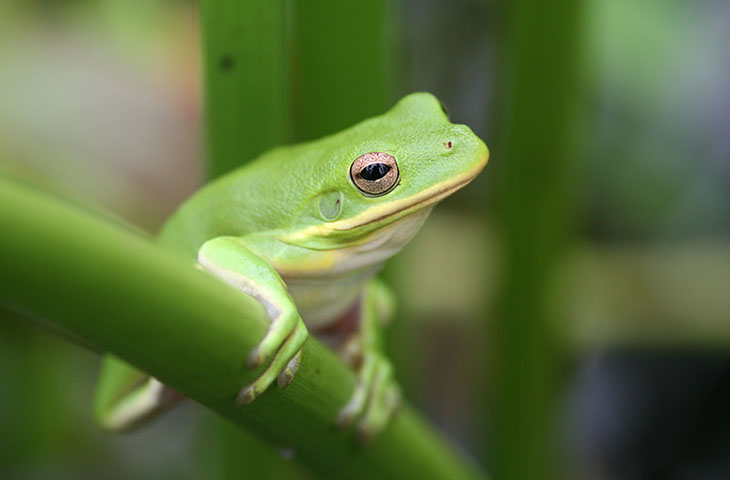
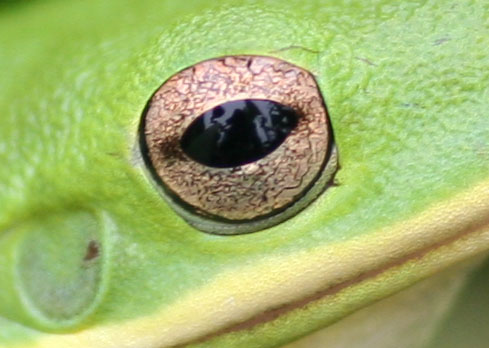 Now I’m going to pause here for a bit of interesting trivia before moving on. This is the same image cropped down to see the eye detail. You can’t quite make out the camera and I, due to the light being at my back as I aimed downwards, but you can see the flash on the bracket arm to the left, as well as plenty of other leaves surrounding me. These were typical conditions, and even leaning close for many of these shots meant I was disturbing stems and leaves which could send warning signals to the frogs. Progress was glacially slow, but that was okay, since I was surrounded by subjects.
Now I’m going to pause here for a bit of interesting trivia before moving on. This is the same image cropped down to see the eye detail. You can’t quite make out the camera and I, due to the light being at my back as I aimed downwards, but you can see the flash on the bracket arm to the left, as well as plenty of other leaves surrounding me. These were typical conditions, and even leaning close for many of these shots meant I was disturbing stems and leaves which could send warning signals to the frogs. Progress was glacially slow, but that was okay, since I was surrounded by subjects.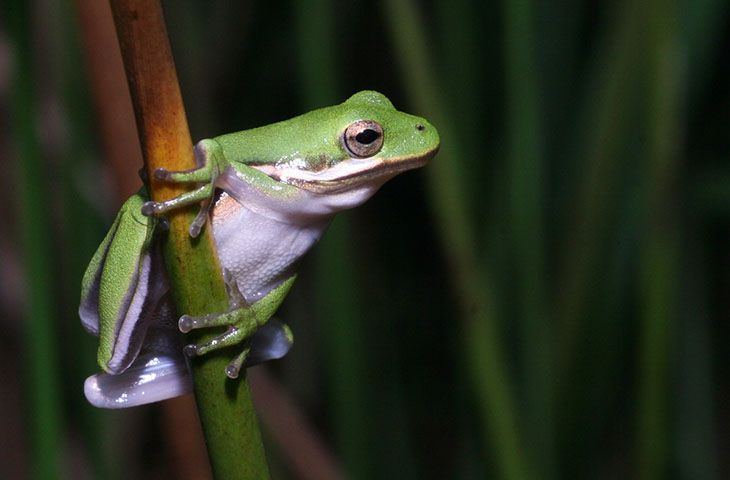
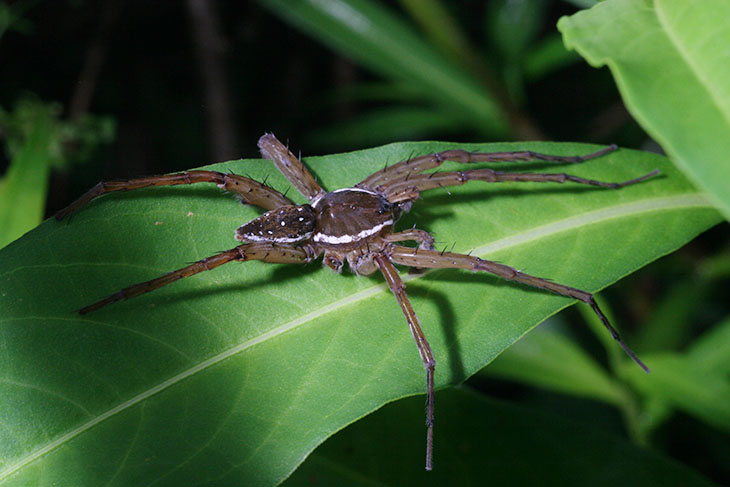
 Naturally, the treefrogs weren’t the only subject I chased while down there, and if you think I can go three days without photographing a spider, you haven’t read very far into this blog. The six-spotted fishing spider (Dolomedes triton) above wasn’t quite big enough to spread across my palm, but close. He’d seen me coming and sought refuge under the leaf, but I poked a finger underneath and flushed him back on top again. This might seem like I was inviting a bite, but I’ll say it again: spiders are shy, and typically avoid any kind of contact. The Eastern pondhawk (Erythemis simplicicollis) at right, meanwhile, not only didn’t care much about my presence, it almost seemed to follow me around – likely, I was seeing multiple dragonflies instead of the same one. I also shot a few tiny little damselflies and a remarkably colorful grasshopper of some sort, which I may feature a little later on.
Naturally, the treefrogs weren’t the only subject I chased while down there, and if you think I can go three days without photographing a spider, you haven’t read very far into this blog. The six-spotted fishing spider (Dolomedes triton) above wasn’t quite big enough to spread across my palm, but close. He’d seen me coming and sought refuge under the leaf, but I poked a finger underneath and flushed him back on top again. This might seem like I was inviting a bite, but I’ll say it again: spiders are shy, and typically avoid any kind of contact. The Eastern pondhawk (Erythemis simplicicollis) at right, meanwhile, not only didn’t care much about my presence, it almost seemed to follow me around – likely, I was seeing multiple dragonflies instead of the same one. I also shot a few tiny little damselflies and a remarkably colorful grasshopper of some sort, which I may feature a little later on.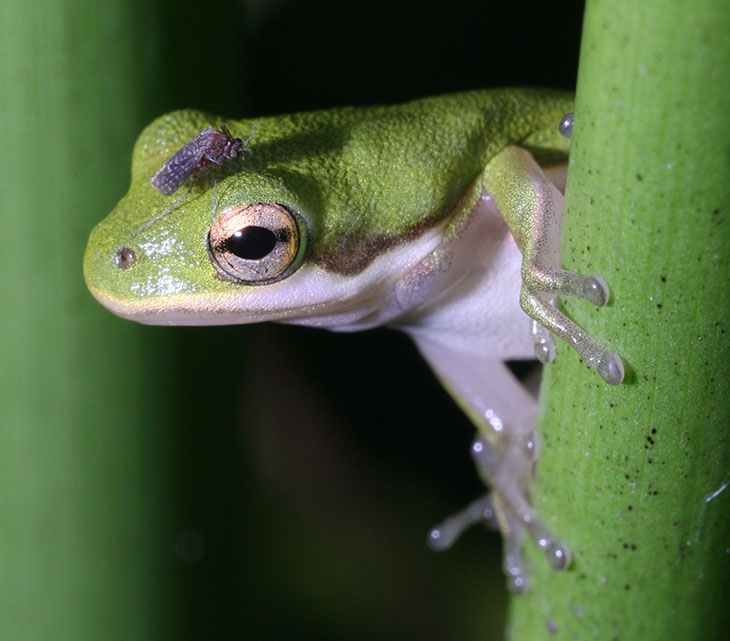
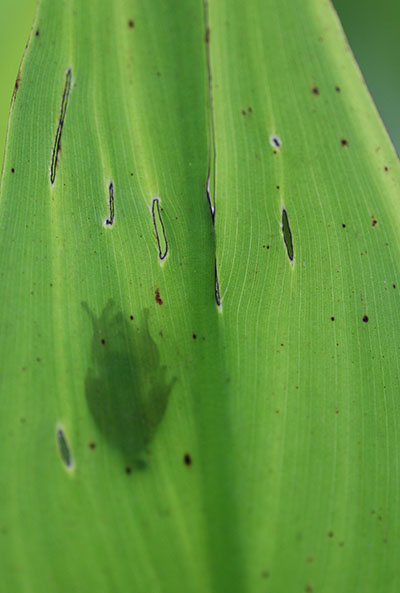 Had the sun peeked out suddenly, I might have been able to spot more examples like this, but it would have chased all of the frogs under cover quickly, so my window of opportunity would have been brief. Maybe I can capture some more examples of this right at sunrise some day – the last time I tried to catch sunrise at this pond, the day broke overcast for the first time in weeks – this was during the drought before the latest patch of downpours came along.
Had the sun peeked out suddenly, I might have been able to spot more examples like this, but it would have chased all of the frogs under cover quickly, so my window of opportunity would have been brief. Maybe I can capture some more examples of this right at sunrise some day – the last time I tried to catch sunrise at this pond, the day broke overcast for the first time in weeks – this was during the drought before the latest patch of downpours came along.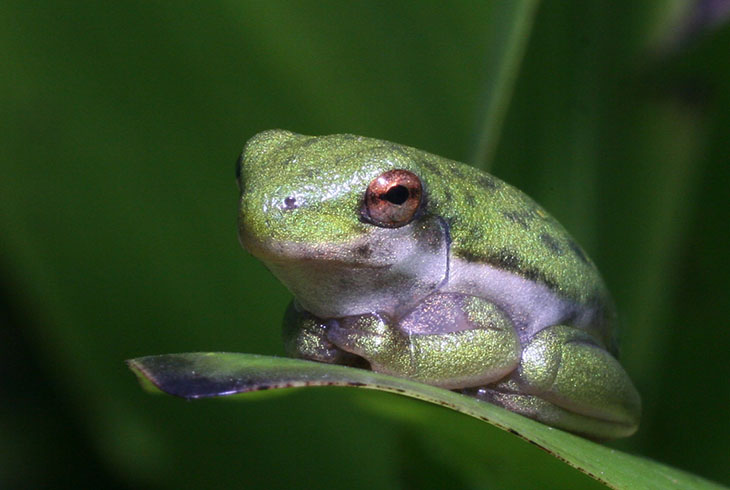
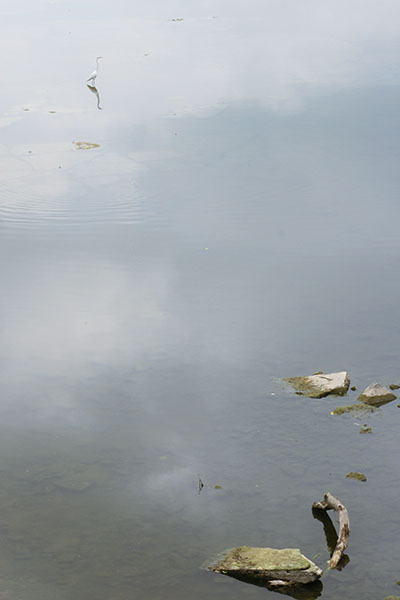 First off, I’m going to mention my long absence and the faintly amusing bit about it. I was traveling, one of the few chances I’ve gotten recently, which would be enough to explain the period without posts – except that, I’d prepared a bunch ahead of time and scheduled them to appear while I was away. The dry period occurred after I came back, when I wasn’t motivated by any topic to get something new up. The trip didn’t involve much postable stuff either, and you’re looking at the sum total of images I took that fit into my typical stock (well, that’s not true, since I have several variations of this, but nothing of other subjects.)
First off, I’m going to mention my long absence and the faintly amusing bit about it. I was traveling, one of the few chances I’ve gotten recently, which would be enough to explain the period without posts – except that, I’d prepared a bunch ahead of time and scheduled them to appear while I was away. The dry period occurred after I came back, when I wasn’t motivated by any topic to get something new up. The trip didn’t involve much postable stuff either, and you’re looking at the sum total of images I took that fit into my typical stock (well, that’s not true, since I have several variations of this, but nothing of other subjects.)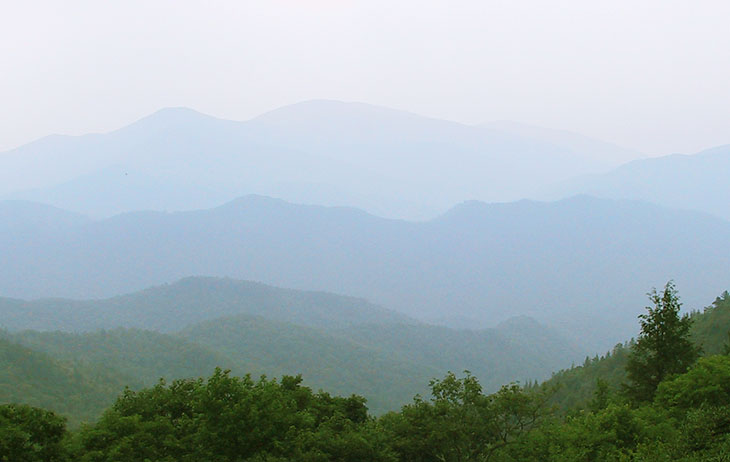
 Anyway, a brief break for the fartsy stuff, since I don’t
Anyway, a brief break for the fartsy stuff, since I don’t 
 I just liked the effect of the backlighting and shadows.
I just liked the effect of the backlighting and shadows.
 Sometimes it’s more how you take it than what you take. It’s easy enough to get photos of lily pads, but do they look better by taking advantage of the way the light and reflections provide contrast with a rich indigo color, and a little effort in framing? Subtle changes to position and shooting angle can change your images radically, communicating the setting while providing a little eye-catching abstraction. Or maybe not – that’s really up to you, and I’m on the edge of doing that ‘art’ thing where I overexplain what it is you’re seeing.
Sometimes it’s more how you take it than what you take. It’s easy enough to get photos of lily pads, but do they look better by taking advantage of the way the light and reflections provide contrast with a rich indigo color, and a little effort in framing? Subtle changes to position and shooting angle can change your images radically, communicating the setting while providing a little eye-catching abstraction. Or maybe not – that’s really up to you, and I’m on the edge of doing that ‘art’ thing where I overexplain what it is you’re seeing.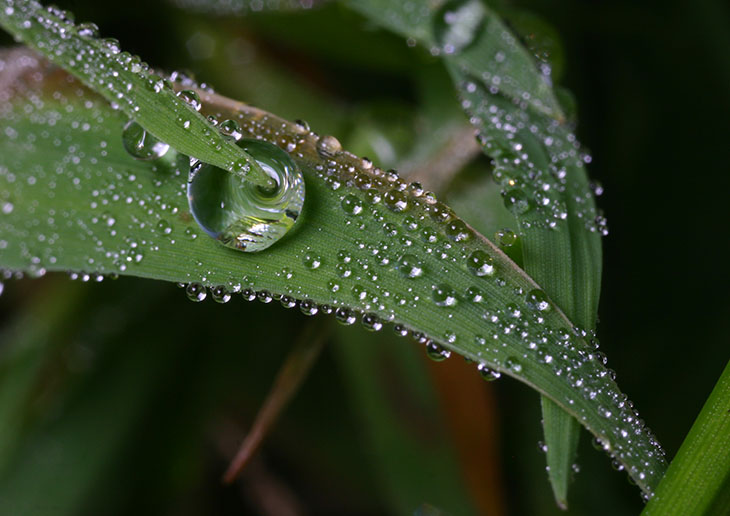
 I don’t recommend tackling high-contrast subjects in bright light conditions, which increase contrast even further – it’s too easy to go outside of the band the camera can capture effectively and start bleaching out the colors or making shadows too harsh. But sometimes it can work.
I don’t recommend tackling high-contrast subjects in bright light conditions, which increase contrast even further – it’s too easy to go outside of the band the camera can capture effectively and start bleaching out the colors or making shadows too harsh. But sometimes it can work.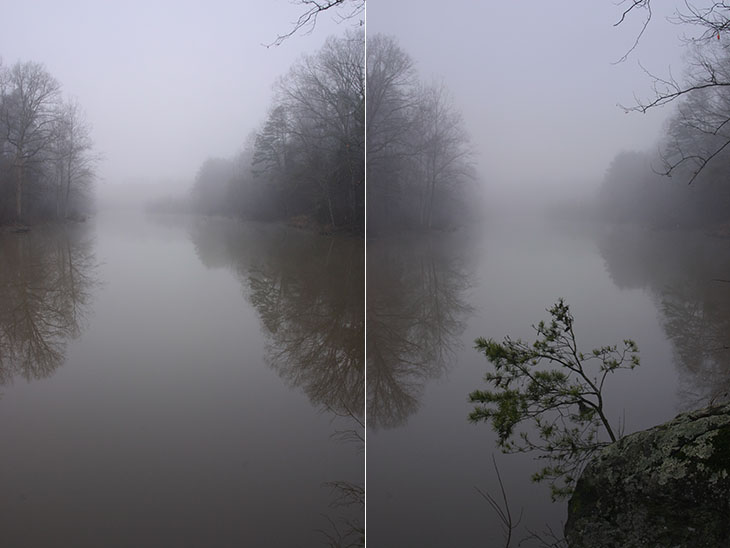
 Not an autumn shot, but a summer one, only a few weeks ago after a heavy wind and rain storm deposited a selection of leaves into a stream. If you’re paying attention to how the light differs in these images, you can see how deep shade can make colors appear differently than in sunlight, and can hopefully use this to your advantage.
Not an autumn shot, but a summer one, only a few weeks ago after a heavy wind and rain storm deposited a selection of leaves into a stream. If you’re paying attention to how the light differs in these images, you can see how deep shade can make colors appear differently than in sunlight, and can hopefully use this to your advantage.